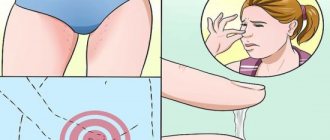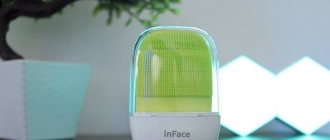A girl who has only recently started menstruating is often overwhelmed by many questions: “What is a tampon?”, “How to use a tampon?”, “At what age can you use tampons?”, “How to insert a tampon correctly?” Such questions are quite natural, and someone should help deal with them.
The most common question is: “At what age can you use tampons?” - arises against the background of the fact that girls are afraid of damaging the hymen. Experts note that the use of tampons by virgins is harmless and there is absolutely nothing to be afraid of.
The fact is that in the hymen there is a hymenal opening specifically designed for menstrual flow. By the beginning of the first menstruation (at about 11-14 years), the hole has a diameter of one and a half centimeters, and the size of the tampon is approximately the same, which guarantees the preservation of the hymen intact.
It is very important to choose the right tampon for the first use. For teenage girls, it is better to choose tampons in the “normal” size, or even better, in the “mini” size. In order to insert it without extra effort, it is better to choose a tampon with an applicator.
Why can tampons get in the way?
A question that worries many teenagers is: “At what age can you use tampons?” - we have already looked at it, now it is very important to understand how to do it correctly. If you experience discomfort from a tampon, it is most likely due to improper insertion of it into the vagina.
If the tampon is inserted correctly, you will not feel its presence at all. Also, discomfort may be felt due to an incorrectly selected tampon size.
Gynecologists advise: before using tampons for the first time, consult a doctor for advice, because there may be contraindications to the use of this hygiene product.
Some girls worry that the tampon may “fall out”, and subsequently unpleasant situations may occur. In fact, these worries are unfounded, because the tampon is designed in such a way that it fits very tightly to the walls of the vagina and does not move. After some time, this hygiene product becomes saturated with menstrual fluid and swells.
How to insert a tampon correctly?

When inserting it, it is very important to thoroughly relax the muscles of the perineum and not worry - this will help resolve the issue of at what age can you use tampons. The vagina itself is naturally angled upward toward the lower back, which is why the tampon must be inserted at the same angle. It is very important to choose the right position for this procedure. One of the most comfortable poses is when one foot is on the floor and the other is on a slight elevation. You can sit on the bidet, spread your legs wide and lean forward a little.
If you were unable to insert this hygiene product correctly the first time, do not be upset; over time, you will learn to do it without much effort.
Tampon - what is it?
Tampons are hygienic products that have a cylindrical shape. Used for monthly discharge. The product is able to instantly absorb a sufficient volume of blood.
Unlike pads, tampons do not come in a variety that can be used on non-period days. The product should be used only in the absence of contraindications.
The tampon will only begin to leak when it is filled with blood. For this reason, it is important to change your hygiene product on time. Otherwise, incidents cannot be avoided.
The structure of the product resembles a sponge. Has an applicator or return thread. The product consists of safe materials and passes all required tests. The composition may contain cotton or viscose. The product is wrapped in individual packaging, which allows for complete sterility.
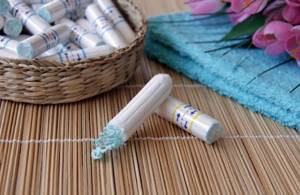
Tampons are soft and absorb liquid very well
Product Features
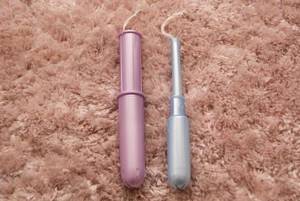
Thanks to the applicator, even an inexperienced girl can easily insert a cotton cylinder into the body to the required depth. The main feature of such tampons is that the intimate area and hands are practically not in contact. The applicator was created specifically to protect the female body from infectious diseases. This device makes the insertion procedure more hygienic and greatly simplifies it. The material for making the applicator is thick cardboard or plastic. The surface of the product is smooth, due to which the introduction is carried out without any difficulties or problems.
The surface of the applicator consists of two tubes of different diameters. The first, with a rounded end, helps insert the object into the vagina, and the second pushes it to the required depth inside the vaginal opening. Each product in the package is protected by an applicator.
This device is an excellent choice for an inexperienced young lady. You need to know that a regular product that does not contain this device increases in diameter when filled, and applicator ones increase in length.
Tampon sizes
Currently, there are four main sizes of tampons; they differ only in the volume of absorbed blood that they are ready to absorb.
Among them:
- Mini. This is the minimum size tampon that is designed to absorb a small amount of liquid.
- Normal. These are universal-sized tampons that are used for moderate discharge, closer to scanty.
- Super and super plus are large tampons that are ready to absorb a large amount of menstrual flow.
Types of tampons
There are several types of tampons that are designed for convenience and comfort in use:
Tampons without an applicator are one of the earliest types; they are compressed contents that are packaged in a bag and, after opening it, the surface that is in contact with air enters the vagina. That is why it is important to be careful about hygiene measures.
Tampons with applicator. These tampons are a complex enclosed in a plastic container with a smooth surface. Not only does it provide protection from the environment, but it will also improve insertion of the tampon into the vaginal cavity, reducing discomfort.
How does a tampon with an applicator work?
A tampon with an applicator consists of two hollow tubes inserted into one another. The larger one has cotton filling inside. It is this part of the applicator that should be inserted into the vagina.
What tampons are best for teenage girls to use?
Just like pads, tampons are classified according to their absorbency and size.
- Mini (mini, with the image of 2 drops) - for light discharge, for use on the first day of the menstrual cycle, as well as for girls in adolescence.
- Normal (norm, with the image of 3 droplets) – for moderate discharge. Their use by teenagers is also acceptable, but before using it, it would be a good idea to consult a gynecologist.
- Super (super, with the image of 4 drops) – for moderate and heavy discharge. These are the most common size and are used by most women, but due to their size they are not suitable for girls.
- Super Plus (super plus with an image of 4 to 6 droplets) - for too much discharge.
For girls who have opted for tampons, it is better to use tampons marked mini (mini) and with an applicator, this will make it easier to insert.
And remember, unlike pads, large tampons are not suitable for teenage girls, as their insertion can be uncomfortable and can even break the hymen.
In addition, teenage girls, like all other girls, are strictly not recommended to use tampons at night.
At what age can tampons be used?

The Association of Gynecologists and Endocrinologists helps to understand the question of “at what age can you use tampons.” The decision to use tampons for girls depends on only two things. The first is how much you understand the responsibility of using tampons correctly. And the second is how mentally prepared are you for such hygiene products? Some teens are terrified of using tampons, and if that's the case for you, there's no way anyone can help. Everyone decides for himself what is best for him to use during menstruation.
The doctors' clear answer is that girls can use tampons. Therefore, if you are ready to try, you can start wearing tampons at any time, even at the age of 13.
If even the very thought of using them is repulsive, then you don’t need to force yourself until you are emotionally ready for it. Some are ready at the age of 14, and if they understand how to use them safely, then this is their right and opportunity. Tampons for teenagers come in different sizes and absorbency. Super absorbent ones are often thicker and longer than regular ones for normal flow and small ones for scanty flow. Tampons can be used simultaneously or alternately with pads.
Hymen - what is it?
Hymen (Latin) is a membrane-like part of the mucous membrane. It closes the vaginal opening. Normally, all girls are born with it. Rupture or defloration usually occurs during the first sexual intercourse, and is accompanied by the release of blood.
The hymen often has a single hole designed to drain the blood that accumulates in the vagina during menstruation. A large percentage of girls have multiple holes. Depending on their number and location, the hymen can be ring-shaped (one hole), ethmoid (several small holes), septate (the hole is divided by a septum) and others.
The purpose of the hymen is a protective function; it prevents the entry of pathogenic microorganisms into a young, fragile body. After defloration, the vaginal microflora changes significantly.
The question at what age can you use tampons can be rhetorical; there is no exact answer to it.
The first menstruation begins in girls at the age of 12-14, the cycle is established for a whole year, and then repeats monthly throughout their reproductive life.
Everyone loses their virginity at different ages. The most optimal age is from 16 to 18 years.
When deciding to use tampons, you need to consider the following factors:
- A little girl, having not yet sufficiently studied her genitals, can damage the thin film with careless, inept movements. Even if a tampon easily enters the vagina, when it absorbs secretions, it will increase in size, and the hymen may be damaged when removed.
- If there are several small holes in the membrane, then the tampon may simply not fit into one of them or may be damaged if inserted persistently.
- Considering that the function of the hymen is to protect against unnecessary microbes, when a tampon is inserted, this barrier loses its meaning; the girl deliberately invades the clean environment of the vagina, populating it with microorganisms.
DETAILS: How to cure bronchitis with a lingering cough - Doctor Med
What if you are a virgin?
Every girl can insert a tampon, including virgins, as well as those who have had sex. And although the use of tampons can sometimes lead to stretching or tearing of the hymen, it does not actually lead to loss of virginity.
Inserting a tampon will be difficult at first, especially for a virgin, so there are different sizes to choose from, and the smaller it is, the easier it is to manage. If you have problems with insertion, then it’s easier to find out whether tampons can be used by virgins from your gynecologist.
Is it possible to lose your virginity with a tampon?
Tampons are a means of hygienic protection for women during menstruation. Tampons are made 100% from natural raw materials - cotton - it is sewn, twisted and pressed, forming a physiological shape.
A tampon is inserted directly into the vagina, where it absorbs menstrual fluid into itself, preventing it from coming out. It is this fact that makes tampons so attractive to dynamic women. And it is this fact that causes the most concern among girls: will a tampon damage the hymen?
The hymen is an elastic film that separates the internal genital organs from the external ones, with a hole in the center through which blood and other vaginal secretions come out. The size of the hole reaches 2.5 cm, and the elasticity of the hymen increases during menstruation. The size of the tampon does not exceed 1.5 cm in diameter, the surface is smooth and silky, so its insertion into the hymen is absolutely safe.
What tampons can girls use?
The modern market for feminine hygiene products offers a wide range of tampons of different brands. The basic properties of tampons do not differ from each other, regardless of the manufacturer. They all serve one purpose - to protect a woman from menstrual flow.
Some manufacturers offer a special series of tampons for teenagers. These tampons are intended for use by virgins and fully meet the requirements of their young body. But ordinary tampons are also quite suitable for virgins, since the main selection criterion is, after all, their absorbency, which can be determined by the droplets drawn on the packaging - the more droplets, the higher the absorbency. For girls, it is better to use tampons with low absorbency - no more than two drops. Not all adult women can afford this, and even more so a girl with an unsettled menstrual cycle and an unclearly defined abundance of menstruation.
How to install a tampon without an applicator
Can girls use tampons without applicators? It is possible, although introducing it is a little more difficult, especially for the first time.

First of all, you should wash your hands and wash yourself. Then the tampon is inserted into the vagina with 2 fingers, so that the string remains outside. The main thing is to get into the hole in the hymen and set the desired trajectory of movement along the vagina, taking into account that it is slightly curved. Not many people manage to do this correctly the first time. Therefore, you should familiarize yourself with the anatomy of the woman’s genital organs in advance.
How to properly insert a tampon into a virgin?
Each package of tampons contains instructions for use. Before using tampons, the girl needs to study it carefully. The basic rules of use are as follows:
- Before inserting a tampon, hands and genitals must be thoroughly washed;
- It is better to insert a tampon in a squatting position or on the toilet, with your legs spread wide apart, or standing slightly crouched, or placing your leg on some elevation;
- release the tampon from its individual packaging, take it with your thumb and middle finger and the rounded side up, insert it into the vaginal opening, helping with your index finger;
- since the vagina is located, in relation to the lower back, at an angle, the tampon must be inserted at a slight angle;
- The correct position of the tampon inside the body of a girl (virgin) is in the second third of the vagina. It is here that there are the least number of nerve receptors, so the girl does not feel the tampon in this place;
- if the tampon causes feelings of discomfort, pain, or inconvenience, it means that it was inserted incorrectly. It is necessary to pull it out and repeat the entire procedure with a new tampon.
Tampons with an applicator are very convenient to use. The applicator is a kind of case consisting of two plastic or cardboard tubes. The outer tube contains a tampon. Inserting a tampon with an applicator is not much different from inserting a regular tampon.
You need to take the applicator by the corrugated surface of the outer tube and insert it into the vagina until the fingers holding the applicator touch the body. Then press the inner tube with your free finger - it will push the applicator out of the vagina, leaving the tampon there. Throw away the applicator, wash your hands.
If you can’t insert a tampon, it’s better to consult a gynecologist; perhaps in your case the use of tampons is impossible due to physiological characteristics.
Take a mirror
Nothing funny. Some girls (even those who are sexually active) do not know basic female anatomy. Using a mirror, you can see exactly where the tampon should be inserted. And this is not the urethra (where urine comes out), but the vagina (where discharge comes out). Got it? Great. But we don’t remove the mirror yet: we will insert the tampon, controlling our actions.
We carry out hygiene procedures
Namely, we take a shower (or, as it is often called, a “female shower”) and wash our hands. This is a mandatory part, because we don’t want an infection.
Taking the correct pose
This is where someone gets into something! The tampon instructions recommend several positions for inserting a tampon (I wonder if they tried them themselves?):
How to install a product with an applicator
When choosing the type of tampon for herself, the girl relies on what is more convenient for her; for some it is easier to use the regular option, for others only with an applicator. It's a matter of individual preferences. However, a tampon with an applicator is considered more hygienic, and this is what is recommended for virgins. Before installation, you must thoroughly wash your hands and not only - you must begin the procedure washed.
The second important fact is the correct posture. There are many of them - squatting, lying down, on the side, it is important that it allows the pelvic muscles to completely relax, otherwise the girl will experience pain when inserting the tampon. The position is selected individually during the insertion process.
The applicator is taken by the narrow part with 2 fingers and inserted into the vagina. The direction of movement is at an upward angle, towards the spine.

After the applicator has been inserted to a sufficient depth, that is, the fingers holding it have touched the labia, you should use your index finger to press on the narrow part of it, plunging it into the wide segment, which is currently located in the vagina. After this, the applicator is carefully and slowly removed. When installed correctly, the product remains in the vagina at the required depth.
How do you know if the tampon is inserted correctly?
If the tampon is inserted correctly, it will not be felt, because located in that part of the vagina where there are few sensory nerves. If you inserted the tampon correctly, then when you change your body position, move, and even during heavy physical activity, it will not fall out of the vagina. If you're just starting out or using tampons for the first time, it's best to choose the smallest Mini® ProComfort®ob with spiral grooves and a unique silky SilkTouch™ coating. The instructions for using ob® tampons will help you carefully insert the hygiene product.
Is it possible to swim with tampons?
One of the indications for the use of tampons is proper use while swimming or swimming, as well as visiting beaches or solariums.
This application has several purposes:
- First of all, it is protection from unwanted blood flow onto the surface of clothing, which causes not only discomfort, but also deterioration in the appearance of clothing.
- Also, during bathing, bacteria contained in the water can enter the cavity of this organ. They cause inflammatory processes, especially on the vulnerable and damaged mucous membrane. As a result, the risk of contracting even a nonspecific infection is increased several times. It is tampons in this case that not only absorb blood flowing from the uterine cavity, but also serve as a mechanical barrier to the penetration of unnecessary bacteria.
What is the replacement frequency
On average, replacement should be done every 4 hours. However, this indicator is quite individual. You need to pay attention to the intensity of the discharge. The tampon should be completely filled.
If the discharge is scanty, you should not keep the tampon inside for more than 6 hours. After this period, replacement occurs. However, if there is not much blood, it is better to still give preference to pads. Otherwise, when pulled out, a dry product will constantly injure the genital tract and contribute to the formation of microcracks.
Only a fully filled tampon comes out easily. There is no need to replace it after every urination. It is allowed to go to the toilet while the product is inside. This is due to the fact that the urogenital canal is in no way connected to the vagina. However, be sure to put the thread aside and wrap it in toilet paper. This will protect the rope from urine splashes. If the product falls out, it is strictly forbidden to put it back.
How does extraction occur?
Removal is easier than insertion. It is enough to place the product in the vagina once and then this process will no longer cause worries and discomfort. Tampons are as easy to use as pads.
However, it is tampons that allow you not to limit yourself on menstrual days. A woman can move actively and not worry about the risk of leakage. That is why dancers and athletes prefer this type of personal hygiene products.
Before removing the product, you should also wash your hands thoroughly with soap. Be sure to dry them with a napkin or towel.
Sit on the toilet and gently pull the thread. The tampon should come out easily. If the product moves slowly, then most likely it has not yet filled with blood and you should wait a little longer, since frequent replacement leads to injury to the mucous membranes of the genital tract and provokes discomfort.

To remove the tampon, you need to pull the string
Doctors' opinion
When asked whether girls can use tampons, doctors answer in the affirmative, although they recommend starting with pads. The advice is explained by the fact that the first periods are usually scanty and short-lived, since at this time the cycle is gradually developing.
Doctors confirm that girls are allowed to use such hygiene products from the first days of menstruation. However, the ideal option is to periodically alternate it with pads: it is preferable to use the latter at night. This advice is relevant even for women. It is better if the girl uses the hygiene product only when necessary, for example, for swimming in the pool.
What tampons are recommended for virgins?
The most suitable tampon for a girl is “mini” or “light”. This is the size officially approved by gynecologists. There are also droplets indicated on the packaging. Their quantity determines the degree of absorption of secretions by a specific product.

Girls should choose packages with two or three drops. Most often they use products from ob, kotex or tampax.
There are also special, very smooth tampons designed for teenagers. They are attractive because they do not injure the vaginal mucosa. It is best to choose them with an applicator - these are 2 tubes. One of them (external) helps to widen the entrance to the vagina, and the other (internal) pushes the tampon.
How to use a tampon
Many people do not know how to use tampons correctly. When administering, the main thing is to follow the rules of hygiene. First you need to thoroughly wash your hands, then print out the tampon and take a comfortable position. You should slowly insert the protection into the vagina, pushing it deeper. If everything is done correctly, you will not feel the tampon. Being inside the body, it does not interfere with movements, is not imprinted through tight clothing, and only the return cord remains visible.
It is recommended to change the tampon at least once every 6 or 7 hours. With intense discharge, you may have to do this more often.
Remove the tampon with clean hands by carefully and slowly pulling the cord. A well-saturated hygiene product is easily removed, but if it is not filled enough and does not give in, no effort is needed. The attempt can be repeated later, when the tampon has absorbed more.
httpss://www.youtube.com/watch?v=Nr88TcZFJpM
What not to do with a tampon
Common mistakes girls make when using tampons:
- Hand washing only after administration. (of course, sanitization is necessary both before and after).
- If you insert it insufficiently deeply, it will create discomfort when moving. (Practice and listen carefully to your body to feel if something is wrong).
- Changing only once a day is dangerous. (Otherwise it will become a cozy home for pathogenic bacteria).
- Using a tampon as a daily hygiene product disrupts the microflora and dries out the vaginal walls. (Use them only when necessary).
- Do not change it even after urine gets into it. (That is, every toilet is a reason to look for a new one).
- Leave overnight. (No comments…)
- Do not change after swimming. (This is the same rule, because this creates an ideal environment for the lightning-fast propagation of infection).
- Flushing down the toilet is a mistake! (Unless you want to meet a cute plumber).
How to insert a tampon for the first time?
After constantly using pads and under the influence of advertising, women decide to try the tamponing method during their menstrual periods.

To prevent the pancake from coming out lumpy the first time, remember the main rules:
- Read the instructions on the package. Manufacturers give different recommendations on changing the hygiene product and administering it internally.
- A secret to the whole world. Consult with a close friend or mother who has experience using such products.
- before packing. Cleanliness of the genitals is a guarantee of protection against sexually transmitted infections and the development of pathogenic microflora in the vagina.
- Use the applicator with clean hands. Wash your hands with soap before administration.
- Choose your size and style. For the night, select a special series of products. For a virgin it is better to buy a mini size, for a young woman - normal or super, who gave birth with heavy discharge - super plus.
Important! A tampon protects against leaks better than pads.
There are 2 types of hygiene products: with applicators and without applicators. Ordinary tampons are inserted into the vagina like vaginal suppositories. Products with an applicator make the process much easier.
Follow the step-by-step instructions for introducing a regular copy:
- Remove the tampon from the protective shell.
- Pull out the string at the bottom.
- Spread your legs wider, you can lift one leg up.
- Spread your labia with your other hand.
- Insert the specimen into the vagina at an angle of 45 degrees.
- The depth of entry into the interior is 5-7 cm.
- Stand up. If there is no feeling of discomfort, the tampon is inserted correctly.
The depth of insertion also depends on the anatomical features of the woman. The applicator makes the process easier.
All you have to do is take a comfortable position, remove the protective film and use a special device to place the cotton wool inside.
What are the contraindications?
Use of the product is prohibited if there are contraindications. Restrictions include:
- infectious processes of the reproductive system;

Tampons are prohibited if there is inflammation
- recent delivery;
- undergoing an abortion;
- inflammation of the genitourinary system;
- menarche.
Virginity is not a limitation. The pleura is flexible and has an opening. Girls can use personal hygiene products marked mini.
Relative contraindications
Relative contraindications include:
- State of virginity. Although using tampons during menstruation according to the instructions is not prohibited until the moment of sexual intercourse, there is nevertheless a possibility that traumatic damage to the hymen will occur when the filled tampon is pulled out. The risk of developing an inflammatory process in the vaginal cavity is also increased, which may complicate further selection of treatment.
- Chronic inflammatory processes that are prone to recurrence. Thus, women who are faced with the problem of frequent discharge from the genital tract are not recommended to use this option of a hygiene product during menstruation.
Possible complications
Health officials insist that tampons pose the least risk for girls aged 12 and over, while sanitary pads are used alternately, day after day, day after day. Hygiene products are made from cotton and therefore may contain pesticides that are sprayed during cultivation.
Chlorine, a bleaching agent used to lighten tampons, can cause problems for some.
Chlorine causes the formation of dioxin, which poses a health hazard. Every girl needs to remember about the most important complication - toxic shock syndrome (TSS). Know the causes and symptoms to minimize the risk of its occurrence. You need to use tampons safely, change them regularly and practice good hygiene.
Symptoms of toxic shock syndrome
Sometimes using tampons can cause some women to suffer from toxic shock syndrome. The following is a list of symptoms of toxic shock syndrome, but it is possible to experience only one or two symptoms:
- sudden fever and increase in temperature;
- vomit;
- diarrhea;
- a red rash that looks like a tan on any part of your body;
- dizziness or feeling weak.
If you experience any of these symptoms, remove the tampon immediately and consult a doctor.
Why does a tampon cause discomfort?
Having studied information on how to insert a tampon, some women subsequently complain that the product causes discomfort inside. Discomfort increases when walking, lying or sitting. It is explained by incorrect positioning of the product and overstrain of the muscles responsible for holding it.

You can remove the recently inserted tampon and try to insert it again. The body should be in a position different from the first time. All actions should be performed in a relaxed state. If the product still does not want to enter as expected, it must be disposed of and a new one used. Kotex consumers often experience discomfort after inserting a tampon. They can be advised to use Tampax with an applicator.
If no methods relieve a woman of discomfort, most likely, sanitary tampons are not suitable for her. In this case, there is only one way out - to use gaskets with protective wings. They are intended for menstruation.
What to do if inserting a tampon hurts?
Some women complain of a feeling of discomfort when introducing a hygiene product.
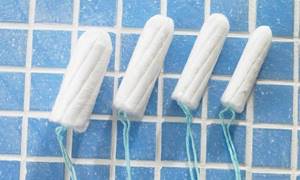
If inserting a tampon hurts, try a few options before giving up:
- Wrong size. Purchase a product with a smaller diameter.
- Try inserting the guard while lying down.
- Penetration too deep or not enough.
After childbirth, women may experience problems with insertion at first. Use regular pads, try tampons next month - perhaps not much time has passed since giving birth.
In some cases, pain is a signal to see a doctor. Discomfort in the vagina may indicate the presence of an infectious disease or microflora disorder. After therapeutic therapy, the pain will disappear.
Important! This method of protecting against leakage is not convenient for everyone. Pain may arise out of habit.
Can virgins use tampons?
Girls who are not sexually active can safely use tampons. It is important to choose the right size.
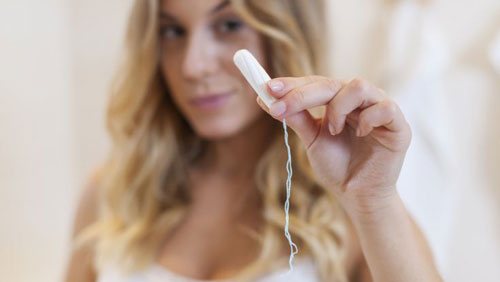
The opening of the virgin pleura reaches a diameter of 2.5 cm. The device is “mini” size with a diameter of 1.5 cm.
Even if the tampon swells after a few hours, the girl will remain innocent when removing the used sample.
But it is better to use this type of protection as a last resort; it is better to give preference to classic gaskets.
Advice! It is better for a young girl to consult with a friend or mother before using it for the first time.
Advantages
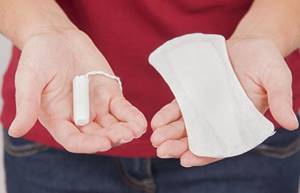
According to most women, the use of this product has a number of advantages over others:
- With correct insertion of the product into the vagina and its precise location there, reliable protection against leakage is maintained.
- A tampon correctly inserted into the vaginal space from the outside is completely invisible, so you can freely wear tight-fitting clothes.
- When using, you don’t have to limit yourself to any movements that are familiar; Even swimming in the pool or sea or leading an active lifestyle are not prohibited.
- Another advantage is the size of this hygiene product, which is very small: if necessary, it can easily fit in a purse or small wallet.
Can I use tampons after giving birth?
During the postpartum period, a woman may not have her period for several months. If your first menstruation comes a month after giving birth, it is better to refrain from using tampons.

After 2-3 months, you can safely use cotton protection by choosing the appropriate size.
Important! After childbirth, a woman's vaginal size becomes wider. It is better to buy hygiene products in larger sizes to avoid leakage.
After the birth of a baby, a woman begins to experience lochia - bloody discharge reminiscent of menstruation. They are so abundant that even ordinary gaskets cannot cope with the scale. During this period, it is better to use maxi size pads.
It is recommended not to use the plugging method to protect against leakage in the following cases:
- During the postpartum period. For genital injuries, use a tampon after six months.
- After a cesarean operation or termination of pregnancy.
- In the presence of gynecological diseases and vaginal injuries.
- For toxic shock syndrome.
In such situations, it is better to choose the classic method of protection. Don’t get carried away and constantly use tamponing as the main method of protecting against leaks.
At night, use regular pads. Use cotton swabs in emergencies.
Useful video
Share this post
- Related Posts
- Colon cleansing at home quickly and without harm
- Instructions for use and composition of the alcohol barrier
- What temperature is considered normal, why deviations occur and what Komarovsky advises for infants
- What to do if a speck gets into your eye and how to get it out
- Men's vitamins to improve potency: how food affects them and the best complexes in the pharmacy
- Tinedol: cream for foot fungus: instructions for use and composition
Flaws
The disadvantages of using tampons include the following properties:
- One of the first disadvantages of this hygiene product is the fact that by absorbing menstrual fluid, the product can also absorb natural beneficial secretions that are concentrated along the walls of the vagina, and this, in turn, dries it out and leads to various irritations, including , and from the tampon itself, and removing it causes pain.
- Disadvantages include the occurrence of various infections if it remains in the vagina for longer than expected; In addition, an overfilled product will no longer perform its functions and leakage may occur.

